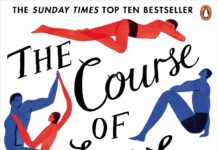In the sprawling labyrinth of Marcel Proust’s monumental work, Sodom and Gomorrah stands as a chapter rich with complexity, subtlety, and profound introspection. invites readers to navigate these intricate layers of yearning, social mores, and hidden truths that define Proust’s exploration of human nature. This reflective analysis offers a thoughtful examination not only of the text itself but also of the cultural and psychological undercurrents that ripple through its pages. By peeling back the delicate veneer of desire and decadence, the book challenges us to reconsider the timeless tensions between appearance and reality, intimacy and secrecy, within Proust’s evocative narrative.
Exploring the Complex Tapestry of Desire and Social Decay in Proust’s Sodom and Gomorrah
Marcel Proust’s Sodom and Gomorrah unearths the labyrinthine intersections between human desire and the gradual unraveling of social veneer, revealing a society caught between repression and revelation. In this work, desire is portrayed not merely as an intimate force but as a potent catalyst for social transformation and decay. Proust masterfully depicts how secret longings and hidden identities coexist with surface decorum,creating a fragile equilibrium on the brink of collapse. The narrative dissects the contradictions of aristocratic prestige, where beneath polished facades lie fractured relationships and unspoken yearnings that threaten to consume the very structures that uphold them.
- Desire as Duality: Both a source of liberation and social peril
- Societal Masks: How appearances veil complex emotional currents
- Decay and Renewal: The paradox of destruction paving the way for new identities
Through a subtle interplay of characters,Sodom and Gomorrah exposes the vulnerability of a world on the edge,where norms clash with innermost truths. The decay is not merely physical or moral but existential, as Proust explores the erosion of certainty affecting everything from relationships to class structures. This tension is encapsulated in the shifting dynamics of intimacy, power, and secrecy – a delicate dance between what is revealed and what remains obscured, challenging readers to confront the multifaceted nature of human experience.
| Theme | Dimension | impact |
|---|---|---|
| Hidden Desire | Psychological | Creates tension beneath social harmony |
| Social Facade | Cultural | Maintains status quo despite internal conflicts |
| Decay | Existential | Signals transformation and impending collapse |
The Intricacies of Identity and Hidden Longings within Proust’s Narrative Landscape
Within the labyrinthine corridors of Proust’s narrative, identity emerges not as a fixed entity but as a fluid interplay of masks and revelations. Characters grapple with their public façades while navigating deeply concealed longings that resist societal norms.This tension between appearance and authenticity underscores a broader commentary on the performative nature of social interaction and the fragility of self-perception. The act of unveiling becomes a metaphorical journey, where desire is both a catalyst and a shackle, shaping destinies through moments of quiet introspection or explosive confrontation.
The subtle dynamics of power and vulnerability are woven throughout the text, inviting readers to dwell on the paradoxes embedded in intimacy and secrecy. Consider the following elements that illuminate Proust’s treatment of hidden desire:
- Social masquerades that obscure true passion
- Moments of revelation as acts of rebellion
- The contrast between internal longing and external constraint
- Desire as a force both constructive and destructive
| Aspect | Symbolism | Impact |
|---|---|---|
| Masks | Facades of societal expectation | Concealment of true self |
| Glimpses | Brief moments of authenticity | Revealing inner longings |
| Boundaries | Limits of social norms | Conflict and tension |
Decadence as a Mirror of Early Twentieth Century Society and Moral Ambiguity
In Proust’s narrative canvas, decadence is not merely a stylistic choice but a profound commentary on the complexities of early twentieth-century society-a period teetering between rigid Victorian mores and the burgeoning modernist ethos. The lavish soirées and whispered confidences of high society are dissected with surgical precision, revealing a labyrinth of desire and duplicity that both fascinates and disturbs. Decadence here functions as a prism through which the contradictions of social progress and moral stagnation are magnified,exposing characters entangled in the tensions of conformity and rebellion. This moral ambiguity mirrors the broader societal shift-the decay of old certainties juxtaposed with the fragile promise of new freedoms.
- Surface glamour: a mask for hidden anxieties and change.
- Sexual opacity: revealing fractures in traditional values.
- Social rituals: as performances layered with unspoken conflict.
| Theme | Reflection in Society | Character Dynamics |
|---|---|---|
| Desire | Forbidden,fluid,subversive | Yearning beneath social facades |
| Decadence | Excess,decay,resistance | Masking disillusionment |
| Moral Ambiguity | Conflicted values,blurred lines | Internal struggles,societal tensions |
Through this intricate interplay of indulgence and repression,Proust crafts a subtle but incisive critique of his era’s illusory certitudes. the characters’ oscillation between transgression and concealment invites readers to question the stability of identity itself within a rapidly evolving social landscape. In this way, the decadence evocatively mirrors the shifting morals and burgeoning complexities of early twentieth-century life, where the pursuit of pleasure often uncovers the precariousness of societal norms laid bare.
Unpacking Symbolism and Metaphor in Unveiling Desire and Decadence’s Critical Analysis
Marcel Proust infuses Sodom and Gomorrah with layers of symbolism that expose the complex interplay between desire and societal decay. The pervasive use of light and shadow, for instance, not only highlights the contrasts between public facades and hidden truths but also serves as a metaphor for the elusive nature of human longing.This chiaroscuro effect mirrors the characters’ internal struggles, where moments of clarity are fleeting and often overshadowed by moral ambiguity. Such symbolism invites readers to delve beneath surface narratives, revealing how decadence is not simply a backdrop but a dynamic force shaping identity and relationships.
Beyond visual motifs, Proust employs metaphor to deepen the critique of social norms and hidden desires. The recurring image of labyrinthine architecture symbolizes both the complexity of the social web and the characters’ tangled emotions, reflecting the Sisyphean task of self-discovery amidst rigid conventions. consider the following table illustrating key symbols and their metaphorical resonance:
| Symbol | Metaphorical Meaning | impact on Narrative |
|---|---|---|
| Mirrors | Self-reflection & Illusion | Highlights fractured identity |
| Garden | Forbidden Desire | Contrasts natural impulse with social restriction |
| Labyrinth | complexity of social relations | Reflects emotional confusion |
- Mirrors challenge perceptions of the self and truth.
- Gardens evoke an Edenic space corrupted by societal taboos.
- Labyrinths underscore the entrapment within social expectations.
How the Book Illuminates the fluidity of Sexuality in Proust’s Work with Subtle Insight
Within the labyrinthine prose of Proust’s work, sexuality emerges not as a fixed entity but as an ever-shifting spectrum, subtly woven into the fabric of desire and identity. This book delicately exposes how Proust navigates the complexities of attraction and intimacy, portraying characters whose desires defy binary categorization. It reveals a world where passion flows fluidly, often entangled with societal expectations and personal concealments, allowing readers to glimpse the nuanced interplay between repression and revelation. Through Proust’s keen observation, sexuality becomes a canvas for exploring human vulnerability and the transformative power of love.
- Multiplicity of Desire: Characters embody varied and evolving sexualities, resisting simplistic labels.
- Unspoken Yearnings: Silence and coded language highlight hidden dimensions of erotic life.
- Social Shadows: The tension between public persona and private passion underscores the fluidity.
| Character | Sexual Expression | Significance |
|---|---|---|
| Baron de Charlus | fluid, elusive | Challenges norms, symbolizes hidden complexities |
| Morel | Ambiguous allure | Represents youthful temptation and social transgression |
| Swann | conventional yet conflicted | Reflects tension between desire and societal limits |
A Closer Look at Temporal Shifts and Memory in the Reflection on Sodom and Gomorrah
within the intricate fabric of Proust’s narrative, time unfolds not as a linear stream but as a fluid tapestry woven from memory and desire.Moments from the past materialize, not as fixed events, but as palimpsests layered with emotion and subjective perception. This temporal elasticity invites readers to experience Sodom and Gomorrah as both a ancient reflection and an intimate psychological space where longing blurs the boundaries between yesterday and today. The act of remembering, fraught with nostalgia and revelation, transforms characters and settings into vessels of meaning, emphasizing how memory reconstructs reality through the prism of suppressed desires.
Such oscillations in time also serve to dismantle conventional moral judgments, rendering decadence as a complex interplay of social façade and concealed truths. Proust’s narrative style mimics the workings of the human mind-fragmented, recursive, and selectively amnesic-thus challenging the reader to untangle the web of identity, secrecy, and societal masks. Below is a succinct overview of temporal motifs and their narrative roles within this section:
| Temporal Motif | Narrative Function | Emotional Resonance |
|---|---|---|
| Memory Flashbacks | Revelation of hidden desires | Nostalgia and regret |
| Non-linear Chronology | Disruption of moral absolutes | Confusion and empathy |
| Temporal Overlaps | Blurring of past and present | Longing and ambivalence |
- Memory as Reconstruction: Memories are never static reminders but active reinterpretations,influenced by desire and social context.
- The Elasticity of Time: Past events are dynamically re-experienced,exposing hidden layers of character and theme.
- Time’s Moral Ambiguity: Shifting temporal structures problematize rigid ethical categorizations, inviting empathy over condemnation.
The Role of Art, aesthetics, and Sensuality Interwoven in Proust’s Thematic Fabric
In Sodom and Gomorrah, art transcends mere decoration to become a conduit for desire and an exploration of identity. Marcel Proust masterfully employs aesthetic experience not only as a backdrop but as a vital force that animates his characters’ inner lives. The tactile beauty of objects and the sensuous perfume of moments are woven into the narrative with painstaking detail, illuminating how beauty and sensuality often blur, feeding the complexities of love and longing. This fusion invites readers to perceive art as a mirror reflecting both societal decadence and the intimate vulnerabilities of human passion, revealing layers of meaning that only the aesthetic can provoke.
- Art as Desire: Artistic expression in Proust symbolizes unspoken yearning, an echo of the characters’ suppressed identities.
- Aesthetic Sensuality: Sensual pleasures are rendered through luxurious imagery, where colors, textures, and sounds evoke deeper emotional undercurrents.
- Decadence and Decay: The allure of beauty entwined with moral ambiguity illustrates the transient nature of pleasure and the societal masks it sustains.
| Theme | Artistic Element | Emotional Resonance |
|---|---|---|
| Desire | Portraits and Mirrors | Reflection and hidden longings |
| Aesthetics | Garden parties and decor | Surface beauty masking inner turmoil |
| Sensuality | Textures and perfumes | Heightened sensory awareness |
Beyond mere symbolism, sensuality in Sodom and Gomorrah pulses as a vital rhythm through the narrative, dramatizing the tension between societal expectations and personal freedom.Proust’s prose immerses readers in a sensory mosaic where the material world and human desire collide, often in contradictory modes that expose the fragility of identity and the performative aspects of sexuality. Each scene renders the ephemeral beauty of moments steeped in decadence, emphasizing how aesthetic gratitude can serve as both refuge and interrogation of the self in flux.
Critical perspectives on Proust’s Exploration of Power Dynamics and Social Hierarchy
Within the labyrinthine society Proust paints, power is less a static force and more a fluid currency exchanged through whispers, glances, and carefully choreographed social rituals. The intricate dance between characters reveals how desire intertwines with dominance, crafting invisible hierarchies that define the true architecture of the salons and mansions. It is not merely wealth or title that secures command over others, but the subtle mastery of perception and the adept manipulation of secrets.This exploration challenges traditional notions of power by exposing its elusive, almost performative qualities, where influence is as much about what is left unsaid as what is declared aloud.
- Social Masks: How identity is molded to fit expectations and gain leverage.
- Concealed Desires: The dual role of longing as both vulnerability and weapon.
- Fluid Hierarchies: Status shifts depending on context and audience.
To illustrate the nuanced power exchanges, consider the following breakdown of character roles and their symbolic influence within the narrative:
| Character Type | Source of Power | Social Impact |
|---|---|---|
| Aristocrat | Inherited privilege | Maintains traditional dominance but often rigid |
| Artist/Intellectual | Creative reputation | Challenges norms, offers new perspectives |
| Socialite | Charm and gossip networks | Controls information flow |
| Outsider | Unconventional behavior | Disrupts established order |
Recommendations for Readers Seeking Deeper Understanding of Desire Through Literary Critique
For those eager to delve beneath the surface of Sodom and Gomorrah, engaging with literary critiques that dissect Proust’s portrayal of desire can be invaluable. Begin by exploring essays that emphasize the interplay between desire and social constructs, especially in the context of early 20th-century aristocracy. Scholars often highlight how Proust’s nuanced narrative exposes the contradictions of longing-concurrently exalted and censured-through layered symbolism and introspective prose. Complement your reading with contemporary psychoanalytic interpretations especially those emphasizing Freudian and Lacanian perspectives on repression and identity.
Consider the following resources to expand your analytical lens:
- Critical analyses: Look for papers focusing on Proust’s use of metaphor and temporality in desire.
- Comparative Studies: Explore how desire is framed in parallel works from authors like Oscar Wilde or Marcel Mauss, evoking societal decadence and moral ambiguity.
- Thematic Compilations: Collections dedicated to sexuality, power dynamics, and invisibility in literature add depth to proust’s themes.
| Resource Type | Focus Area | Recommended Author/Source |
|---|---|---|
| Essay | Desire and Social Norms | Elisabeth Bronfen |
| Book Chapter | Psychoanalytic Interpretation | Jacques Lacan |
| Article | Decadence in Literature | John Sutherland |
Balancing Scholarly Rigor and Accessibility in the Presentation of Complex Themes
Striking an equilibrium between scholarly depth and reader-pleasant clarity is essential when unpacking the rich tapestry of Proust’s Sodom and Gomorrah. The novel’s intricate exploration of desire and societal decay demands a presentation style that honors its complexity without alienating the reader. To achieve this, one can employ concise explanations alongside engaging narratives, ensuring that critical theories and textual analyses are embedded within accessible language. This approach transforms dense philosophical concepts into inviting avenues for reflection, cultivating intellectual curiosity rather than academic intimidation.
In practice, leveraging visual aids such as structured breakdowns and illustrative tables enriches comprehension and retention. For instance, a comparative glance at central themes can illuminate their interconnectedness and evolution throughout the novel, making the abstract tangible:
| Theme | Manifestation | Symbolic Resonance |
|---|---|---|
| Desire | Unspoken longings, secret encounters | Inner conflict, societal repression |
| decadence | Aristocratic decay, moral ambiguity | Collapse of tradition, existential ennui |
- Keep jargon minimal without compromising nuance.
- Integrate direct quotes to anchor interpretations.
- Encourage reader engagement through rhetorical questions.
Insights into Narrative Structure and Its Impact on Reader Engagement in the Review
In this labyrinthine exploration of desire and societal decay, Proust masterfully employs a non-linear narrative that mimics the ebb and flow of memory itself. This fragmented structure does more than challenge traditional storytelling-it invites readers to actively piece together the mosaic of human relationships and hidden motives. The resulting tension between revelation and obscurity captivates, fostering a sense of intimate complicity with the text. By weaving temporal shifts and nuanced character introspections, the narrative molds an immersive experience where every detour sharpens the underlying themes of ambiguity and yearning.
Reader engagement is further heightened through Proust’s purposeful pacing and rich, evocative detail, which transforms the act of reading into a sensory excavation. Notice how key emotional moments emerge suddenly,punctuating the narrative with profound insights into desire and decadence:
- Moments of intense self-awareness that break the flow and anchor the reader’s attention
- interludes of social observation that frame personal longing within broader cultural decay
- Recurring motifs that subtly guide the reader through the labyrinth
This careful modulation creates a rhythm that balances intellectual engagement with emotional resonance,making the text not just a story,but an experience layered in meaning.
| Technique | Effect on Engagement |
|---|---|
| Non-linear Timeline | Encourages active interpretation |
| Detailed Sensory Description | Deepens immersive experience |
| Shifts in Narrative Voice | Creates intimacy and distance simultaneously |
| Symbolic Motifs | Enhance thematic depth |
Contextualizing Proust’s Work in Modern Literary and Cultural Discussions
In the fabric of modern literary discourse,Proust’s exploration of desire and societal decay resonates with contemporary themes surrounding identity,sexuality,and power dynamics. Sodom and Gomorrah transcends temporal confines by unmasking the paradoxes of human longing amid rigid social constructs. Its nuanced treatment of homosexuality and the performative nature of social interactions challenges the heteronormative paradigms prevalent in early 20th-century literature, offering a profound commentary that invites reevaluation within today’s frameworks of queer theory and cultural studies.
Contemporary cultural discussions often highlight the layered textures of decadence and repression marked by Proust’s prose. This is evident in how the novel’s characters embody both the pursuit of pleasure and the melancholic consequences of excess.The intersectionality of desire in Proust’s text opens a fertile ground for scholarship, as represented in the table below, where key thematic concerns align with ongoing debates in modern criticism:
| Theme | Modern Critical Lens | Representative Aspect |
|---|---|---|
| Desire & Identity | Queer Theory & Psychoanalysis | Fluidity of Self & Social Masks |
| Decadence & Morality | postmodern Ethics | Excess as Resistance |
| Social Surveillance | Foucault’s Panopticism | Gossip & Social control |
- multiplicity of Desire: Explores hidden layers beneath societal facades.
- Temporal Fluidity: Challenges linear narratives of morality and decay.
- Intersection of Public/Private: Exposes tensions in personal and communal identities.
About the Author Behind Unveiling Desire and decadence and Their scholarly Contributions
invites readers to wander through the intricate labyrinth of human longing and societal facades with a steady, contemplative guide.It neither glorifies nor condemns but rather shines a light on the delicate interplay between desire and decorum that pulses beneath the surface of proust’s masterpiece. For those willing to embrace its measured pace and subtle revelations, this reflection offers a rewarding passage into the depths of one of literature’s most enigmatic explorations of identity and decadence.










